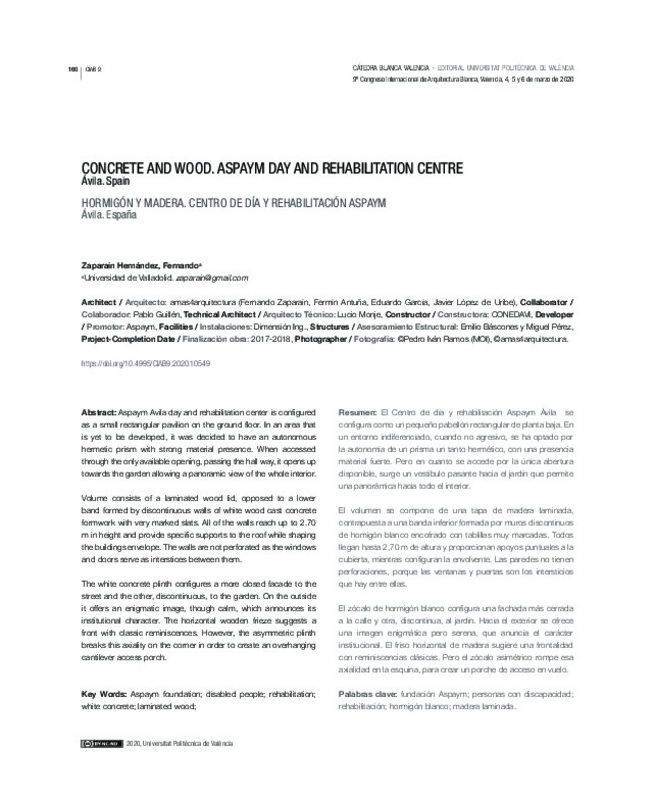JavaScript is disabled for your browser. Some features of this site may not work without it.
Buscar en RiuNet
Listar
Mi cuenta
Estadísticas
Ayuda RiuNet
Admin. UPV
Hormigón y madera. Centro de día y rehabilitación Centro de Día y RehabilitaciónASPAYM. Ávila
Mostrar el registro completo del ítem
Zaparaín, F. (2020). Hormigón y madera. Centro de día y rehabilitación Centro de Día y RehabilitaciónASPAYM. Ávila. En IX Congreso Internacional Arquitectura Blanca. Editorial Universitat Politècnica de València. 1-7. https://doi.org/10.4995/CIAB9.2020.10549
Por favor, use este identificador para citar o enlazar este ítem: http://hdl.handle.net/10251/140261
Ficheros en el ítem
Metadatos del ítem
| Título: | Hormigón y madera. Centro de día y rehabilitación Centro de Día y RehabilitaciónASPAYM. Ávila | |
| Otro titulo: |
|
|
| Autor: | ||
| Fecha difusión: |
|
|
| Resumen: |
[EN] Aspaym Avila day and rehabilitation center is configured
as a small rectangular pavilion on the ground floor. In an area that
is yet to be developed, it was decided to have an autonomous
hermetic prism with strong ...[+]
[ES] El Centro de día y rehabilitación Aspaym Ávila se
configura como un pequeño pabellón rectangular de planta baja. En
un entorno indiferenciado, cuando no agresivo, se ha optado por
la autonomía de un prisma un tanto ...[+]
|
|
| Palabras clave: |
|
|
| Derechos de uso: | Reconocimiento - No comercial - Sin obra derivada (by-nc-nd) | |
| ISBN: |
|
|
| Fuente: |
|
|
| DOI: |
|
|
| Editorial: |
|
|
| Versión del editor: | http://ocs.editorial.upv.es/index.php/CIAB/CIAB9/paper/view/10549 | |
| Título del congreso: |
|
|
| Lugar del congreso: |
|
|
| Fecha congreso: |
|
|
| Tipo: |
|









